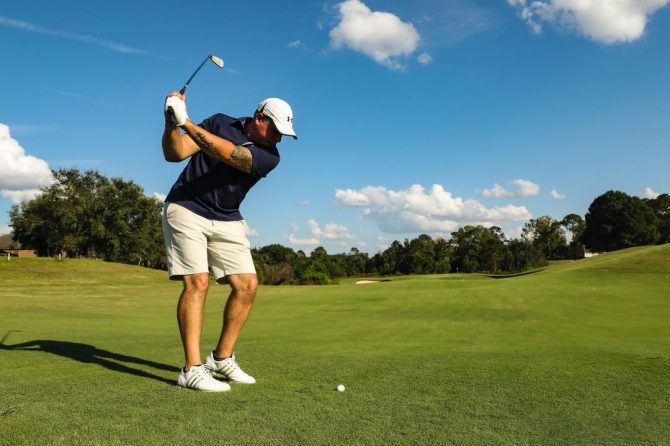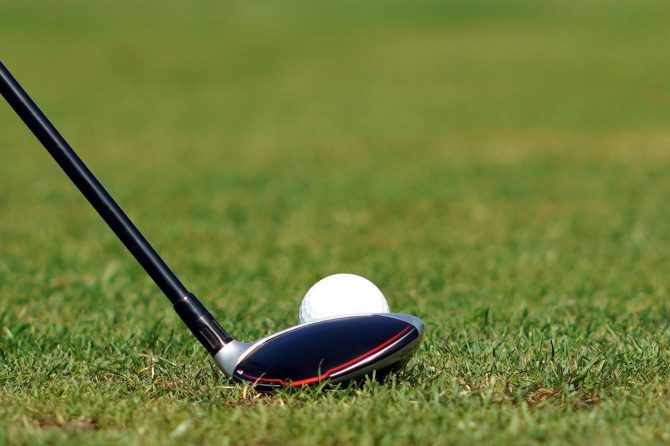Introduction
The intricate relationship between mental acuity and physical skill is basic to success in sports, especially in a precision-focused game like golf. As players strive for betterment,the technique of slow-motion swing practice has gained recognition as an effective method that goes beyond customary training routines. This approach not only hones the physical aspects of the golf swing but also enhances cognitive functions that are crucial for better performance on the course. By deliberately analyzing their swings at a slower pace,golfers embark on a comprehensive learning journey that improves body awareness,sharpens focus,and fosters strategic decision-making. This article delves into the psychological benefits of slow-motion swing practice and how these cognitive enhancements lead to a deeper comprehension of swing mechanics while optimizing overall performance.
Cognitive Benefits of Slow-Motion Golf Swing Practice
Engaging in slow-motion practice allows golfers to tap into various cognitive processes that significantly enhance their game. One key aspect is decompositional learning, where players dissect each element of their swing into smaller parts. By concentrating on specific components such as grip, stance, backswing, and follow-through, golfers develop a more detailed understanding of how these elements interact with one another. This analytical approach creates a richer mental framework for visualizing improvements and applying corrective measures during actual play.
Moreover, executing swings at reduced speed utilizes embodied cognition, which suggests that physical actions can influence mental processes. As golfers perform their swings slowly, they cultivate heightened kinesthetic awareness—an essential factor for integrating sensory feedback effectively. Mastering mechanics through purposeful movements helps build muscle memory that translates into smoother and more accurate swings when under pressure during games.
The intellectual rigor involved in this method also enhances executive functions such as attention control and decision-making skills. Golfers must maintain concentration on minute details over extended periods; this focused engagement sharpens their ability to assess conditions quickly and evaluate shot options effectively—leading to improved metrics like accuracy and consistency over time.
Kinesthetic Learning: Enhancing Body Awareness in Golf
Incorporating slow-motion practice into regular training routines significantly boosts body awareness through kinesthetic learning techniques. This method encourages players to focus intently on each movement’s subtleties without the immediate pressure associated with hitting the ball successfully.By segmenting the swing into manageable parts,golfers can pinpoint areas requiring adjustment while developing an intuitive understanding of their body’s role throughout the process.
Additionally, practicing slowly strengthens connections between cognitive responses and physical actions; as players repeat movements intentionally they create robust mental blueprints enhancing muscle memory retention over time—key factors like grip pressure or stance width become second nature leading to increased confidence during full-speed execution.
To maximize these benefits effectively structured drill sessions focusing on different aspects can be implemented:
| Focus Area | Recommended Duration |
|---|---|
| Grip Adjustment | 5 minutes |
| Stance & Balance | 10 minutes |
| Backswing Mechanics | 15 minutes |
| Downswing & Follow-Through Techniques | 15 minutes |
With consistent focus across these areas during practice sessions leads not only towards refined techniques but also sharper mental acuity related specifically towards complex movements inherent within golfing itself resulting ultimately yielding greater satisfaction from playing experience overall!
Attention & Decision-Making During Swing Analysis:
Attention plays an essential role when it comes down optimizing performance via analysis conducted through deconstruction methods employed by athletes engaging themselves within slower-paced practices aimed primarily at improving skill sets required throughout gameplay scenarios encountered regularly out there!
Golfers who engage deeply with every single motion find themselves able identify flaws present within grips stances or follow-throughs allowing them dissect intricacies surrounding form execution fostering deeper insights regarding adjustments needed impacting overall results achieved later down line!
Decision-making becomes intertwined closely alongside those aforementioned cognitive advantages realized thanks slowing things down considerably enabling reflection upon strategies enhancing performances further still! Evaluating clubface angles impact determining optimal positioning throughout entire cycle provides brain ample chance process data collected leading better choices made real-time situations faced out there!
This combination focused attention insightful decisions cultivates profound kinesthetic awareness directly influencing consistency observed performances witnessed consistently across rounds played thereafter too!
As individuals continue practicing utilizing slower speeds they develop associative memories tied directly back triumphant executions previously experienced thus replicating those moments accurately even amidst higher tempos encountered later stages gameplay itself!
Strategies For Maximizing performance With Slow Motion Practice:
To fully harness potential benefits derived from engaging regularly within this type methodology requires establishing structured approaches promoting active involvement cognitively speaking! Breaking down individual components becomes paramount here focusing solely upon grips stances backswing downswing follow-throughs separately allows refinement techniques whilst concurrently expanding knowledge base surrounding personal biomechanics involved therein too!
Utilization visual aids feedback mechanisms proves equally critical throughout entire process incorporating video analysis greatly enhances processing capabilities allowing observation critique performed detail-oriented manner additionally mirrors recording devices facilitate real-time evaluations boosting self-awareness levels tremendously providing clear models replicate transitioning back full-speed play seamlessly afterwards too!!
Creating dedicated routines vital ensuring maximum gains achieved consistently consider following elements structure sessions accordingly:
< td >Component Breakdown< td >10 minutes< / td > < td >Video Review< td >5 Minutes< / td > < td >Physical Rehearsal< / dtg = “ ” />15 Minutes< / dtg = “ ” />< / dtg = “ ” />By implementing strategies outlined above cultivates rich environment conducive towards ongoing development cognitively speaking thereby contributing positively improved outcomes observed courses played subsequently encouraging continual growth long-term basis thereafter too!!
Long-Term cognitive Benefits Of Consistent Slow Motion Practice In Golf:
Engaging consistently within realm slow motion practices yields ample long-lasting effects extending far beyond mere golfing experiences alone!! Over time participants refine frameworks supporting enhanced problem-solving abilities strategic thinking skills developed naturally through dissection components comprising respective swings ultimately leading greater comprehension underlying physics governing sport itself facilitating advanced tactical planning adapting easily varying course conditions challenges presented along way!!
Furthermore repetitive nature associated with said methodologies aids building neural pathways linked motor functions muscle memory reinforcing plasticity brains means continuous engagement results noticeable improvements reaction times overall performances exhibited across board!! Visualizations rehearsals steps taken reinforce kinesthetics creating solid foundations essential higher-level plays executed confidently mitigating anxieties often felt competitive environments faced frequently nowadays!!!
| Practice Element< th >Suggested Duration |
|---|
| Cognitive Benefits | description | ||||
|---|---|---|---|---|---|
| Enhanced Focus | Improved Memory | Better Decision Making |
In conclusion adopting principles behind employing regularized forms slow motion training serves multifaceted purpose transcending simple exercises instead acting profound developmental tools enriching golfer’s holistic performances alike!! Facilitating thorough understandings mechanics involved bolstering bodily cognitions refining attentional focuses sharpening decision making capabilities exemplifies innovative approaches skill acquisition optimization realms found everywhere today!!! As athletes increasingly seek elevate games integration strategies rooted psychology stands promising avenues immediate advancements long term growth prospects ahead indeed paving ways future explorations depths enhancements possible unlocking potentials hidden beneath surface waiting discovery always ready embrace change coming forth next chapter journeys undertaken together forevermore!! Unlocking Your Golf Game: How slow Motion Practice Boosts Brain Power and PerformanceMeta TitleUnlocking Your Golf Game: The Power of Slow Motion Practice Meta descriptionDiscover how slow motion practice can enhance your golf performance by improving brain function and refining your technique. Explore tips, benefits, and more! Understanding Slow Motion Practice in GolfSlow motion practice is a technique that helps golfers refine their skills by allowing them to examine their movements thoroughly.This method involves performing swings at a reduced speed, focusing on each component of the swing from setup to finish. The benefits are extensive, offering golfers a deeper understanding of their mechanics, which can lead to enhanced performance on the golf course. The Science Behind Slow Motion PracticeWhen golfers practice in slow motion, they engage their brains in a unique way. This technique helps solidify muscle memory while enhancing cognitive functions related to focus, decision-making, and spatial awareness. Here’s how slow motion practice impacts brain power:
Benefits of Slow Motion Practice in GolfImproved TechniquePracticing swings slowly allows golfers to focus on:
Refined Muscle MemorySlowing down the movements reinforces proper technique, leading to more consistent swings:
Stress ReductionGolf can be mentally taxing.Slow motion practice helps:
Practical Tips for Effective Slow motion PracticeImplementing slow motion practice effectively requires structure and intention.Here are some tips to help you maximize its benefits: 1. Choose a Specific Focus Areadecide on one aspect of your swing to concentrate on during each slow practice session. This could include:
2. Use Video FeedbackRecording your swing allows you to analyze your technique better and notice areas for improvement. When reviewing videos:
3. Incorporate DrillsChoose targeted drills that align with the area you’re focusing on. Here are a few examples: | Drill Name | Description | |——————-|————————————————| | Grip Awareness | Practice holding the club at slow speeds to ensure grip consistency. | | Footwork Focus| Concentrate on foot placement and weight transfer during your swing. | | Follow-Through| Slow down the follow-through to understand balance and body alignment. | 4. Limit DurationKeep practice sessions between 15 to 30 minutes. This helps maintain focus without causing fatigue. Case studies: Success from Slow Motion PracticeCase Study 1: Professional Golfer “A”Professional golfer “A” incorporated slow motion practice into their routine,focusing on their approach shots. As a result, they noticed a marked improvement in accuracy, leading to a 20% reduction in misses on target. case Study 2: Amateur Golfer “B”Amateur golfer “B” struggled with slicing the ball. After adopting slow motion practice, they focused on their swing path. Within weeks, their slice decreased significantly, leading to more consistent drives down the fairway. First-Hand Experience: Transformative Slow Motion PracticeIn my personal experience, integrating slow motion practice transformed my game. Initially skeptical,I dedicated time to this method and quickly realized its effectiveness. Focusing on my grip and swing plane revealed inconsistencies that I corrected, resulting in a marked improvement in my overall game. Putting It All TogetherCombining slow motion practice with on-course experience creates a robust approach to golf improvement. Consider integrating the following strategies:
ConclusionIncorporating slow motion practice into your routine can significantly affect the way you play golf. By enhancing brain function, refining technique, and developing confidence, golfers can unlock their potential and elevate their game. For more insights and tips on improving your golf game, explore related resources on golf performance strategies and techniques. Utilizing the strategies shared in this article can help golfers of any skill level achieve lasting improvements in their performance and enjoyment of the game.  You might be interested in …
**”Golfers Rush to Snag Exclusive Scotty Cameron Putter: Sold Out in Minutes!”**Limited-Edition Scotty Cameron Putter Sells Out Swiftly Golf enthusiasts raced to get their hands on the exclusive Scotty Cameron putter, a stunning homage to the iconic British Open venue, St Andrews. Announced as part of a limited run of just 500 pieces, this putter sparked tremendous excitement within the golfing community. Meticulously crafted from premium 303 stainless steel and finished with a sleek black oxide coating, each putter features an elegantly engraved St Andrews logo. Its uniquely milled face showcases a single sightline, ensuring golfers enjoy unparalleled precision on the greens. As pre-orders kicked off, passionate golfers were quick to act in securing this piece of golfing history. In just minutes, every last putter was snatched up, leaving many yearning for their chance to own this remarkable collectible 
Roberto De Vicenzo’s Golfing Legacy: Principles of Strategy and SportsmanshipRoberto De Vicenzo’s golfing legacy extends beyond his 1967 Masters victory. His sportsmanship and humility shone through, as did his strategic brilliance on the course. He emphasized risk-reward assessment, patience, and tenacity, demonstrating the mental fortitude that distinguishes great golfers. Vicenzo’s legacy serves as a testament to the principles of strategy, sportsmanship, and integrity, inspiring players to pursue excellence with grace and humility. 
Contemporary Trends in Golf Fitness: Enhancing Performance and LongevityThe evolution of golf has witnessed a growing emphasis on physical fitness, recognizing its pivotal role in enhancing performance and extending longevity on the course. Contemporary trends in golf fitness underscore the importance of strength training, particularly focusing on core stability, flexibility exercises to improve range of motion, and cardiovascular endurance for sustained performance. Additionally, a holistic approach incorporating nutrition, sleep, and mental conditioning has emerged, emphasizing the interconnectedness of physical and mental well-being for optimal golfing performance. These advancements in fitness practices have revolutionized the way golfers prepare for the game, enabling them to maximize their potential and enjoy a fulfilling golfing journey. |



